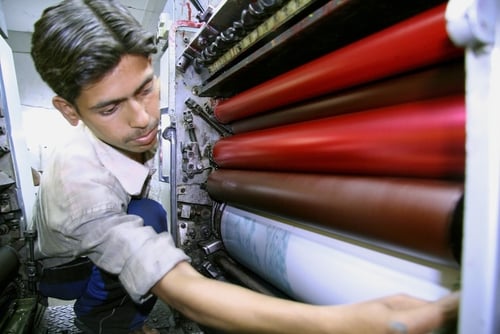
Why start with safety?
When it comes to improving performance in your business, there are countless different areas where you could begin focusing your efforts – like quality, productivity or profitability. Yet at Tribe, we always advocate starting your programme with safety culture change.
Why safety, though? Compared to commercial and financial priorities, it seems like a less pressing choice.
As consulting director, Nick Wharton often discusses this subject with Tribe’s clients. At their training events, he often poses a simple question to his audience: ‘who wants to get hurt at work?’. And the resounding response is always that no one, not one person, wants to be harmed.
Answers aside, consider that question yourself now. Try to think of a similar issue that different people with different agendas, within the same organisation, can unanimously agree on.
You’ll struggle to find subjects everyone agrees on
That’s because safety is one of those rare issues where everyone, regardless of their background, can find common ground.
That’s quite unusual within large, complex organisations composed of boards, line managers, leaders, workers and unions – each with competing interests like working conditions, budgets and production targets.
Yet we all believe we have the right to return home to our families after a day’s work, free from harm. We all value good health and well-being, and we’re all enthusiastic about keeping it that way.
So, done the right way, safety’s a great place to begin when you need to find common ground between people, and empower them to tackle all the other issues that hold back your business.
Imagine trying to find common ground on quality – an issue complicated by variables like individual opinion, supply chain, profit margins and your bottom line.
It just wouldn’t happen. Not without strong disagreement and resistance.
But unite your staff behind safety, so they agree what desirable and safe behaviours look like, then it’s much easier to spread the benefits to other parts of your business.
Let’s look at an example of how it starts with safety
Suppose biscuits occasionally drop off a conveyor belt in a food factory. Staff put up with it, so you’ve got a safety issue from the slip and trip risk, a productivity issue from the waste, a loss of output and time clearing up, and a quality issue because people might be tempted to put damaged products back on the line, to hit targets.
So you ask staff about the problem. They say someone almost slipped over on food waste recently and they’re afraid of doing the same – that slows them down because no one wants to get injured.
You press further, and ask how you can help them put things right. A member of staff finally speaks up and points out that the conveyor belt was never set up properly when it was installed but no one ever listened. You didn’t realise, so you get an engineer to fix the problem.
Suddenly, productivity goes up on your fully operational production line, hygiene improves, losses go down and people stop getting injured.
All because you began with safety – something everyone agreed on.
Safe behaviours are usually correct behaviours
They’re optimised to make working safer and therefore better. And correct behaviours often give rise to better quality, better efficiency, and looking after the environment. These are all beneficial side-effects of tackling safety first and empowering people in that process.
These improvements aren’t just limited to the workplace either. Consider a behavioural programme that begins with basic safety in the home and on the journey to work – where many Indian workers face hazards everyday.
This sort of approach, if reinforced correctly, would encourage workers to make the connection between work, home and whole life well-being. So things like road safety, and safer environments for children to play would lead to better attitudes to safety at work.
Safety is more than just a starting point
Given other high priorities like productivity, safety might feel like an odd place to begin improving your performance. But commercial and financial priorities are far harder to recruit support for, given that boosting output usually means making someone else richer, and the workforce suffering for it.
Safety, though, is a perfect vehicle for change.
It unites people and engages them from the start, so they’re more inspired to make lasting change happen. When your staff feel safe, comfortable and invested in the security of their jobs, you open up new opportunities for them to make life better for everyone. And boost performance – all at the same time!
Success like this comes down to selling safety correctly – getting it right first time by focusing on behaviour, so all these other benefits soon follow. For that, you might need a little help from the experts.
About Nick Wharton
Lead Consultant
My role is to work with clients from many industries, in many countries, helping them to achieve the culture change they seek. I draw on my years of experience in enforcement, as an HSE Manager in industry and for many years as a Director of Tribe and its predecessor JOMC. During this time, I managed our excellent group of experienced and knowledgeable consultants, as well as overseeing the development of the many and varied new tools and approaches we use to help in getting the safety message across and achieving Culture Change.



